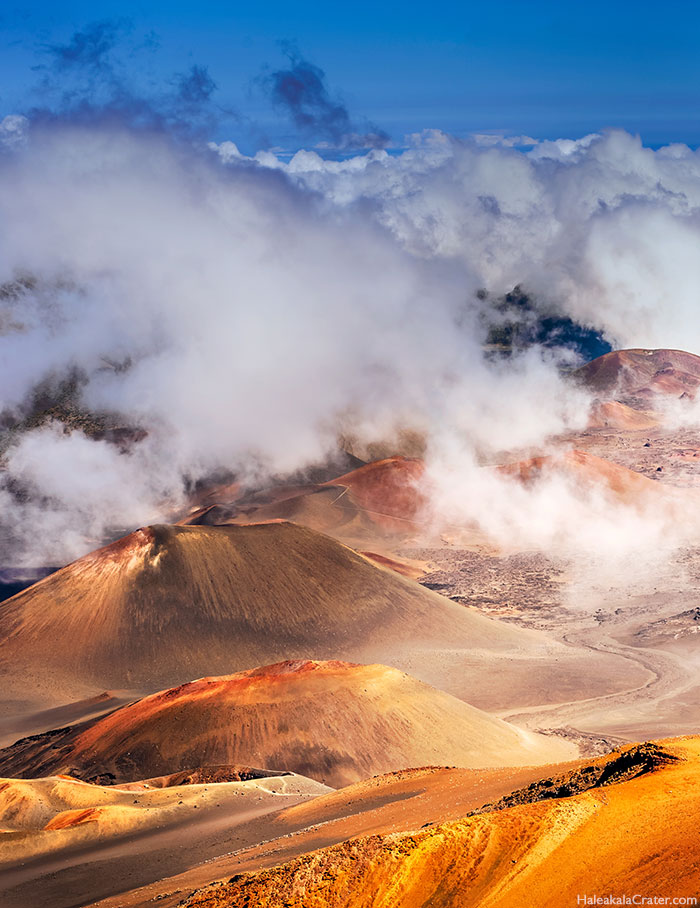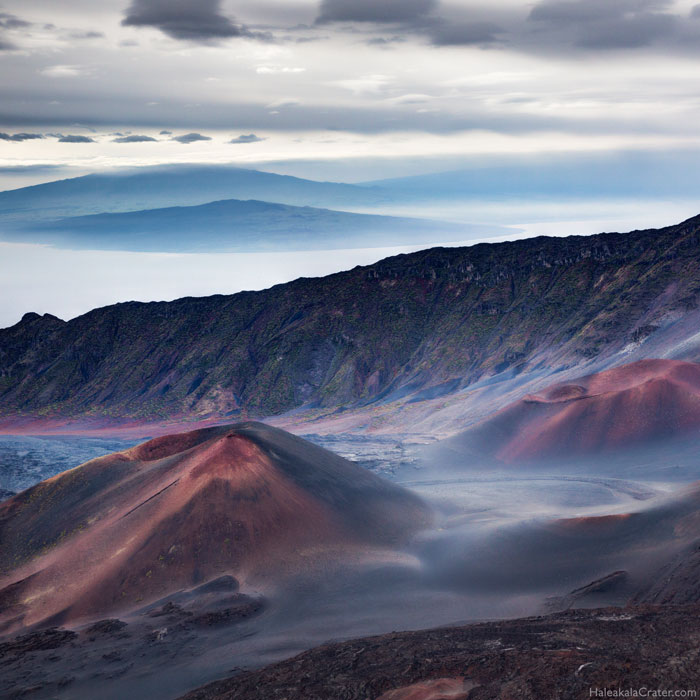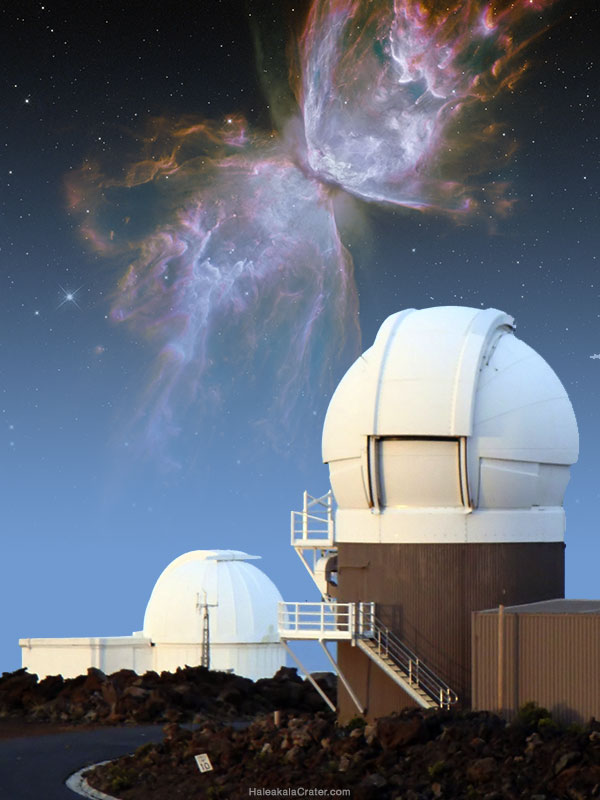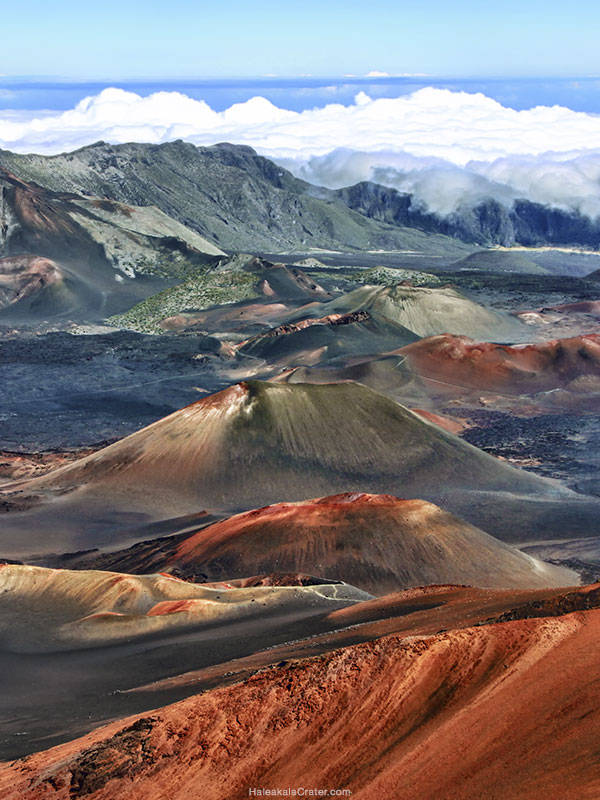Haleakala Weather
Volcano, Flora, Fauna & the Future
Hawaii may bring to mind the stuff postcards are made of—year-round sunshine, talcum-soft beaches, idyllic, balmy weather—but Haleakalā presents a whole new atmosphere. An uncommon example of a “cold-summer Mediterranean climate” in the tropics, as Wikipedia reports, the summit has an average high of sixty degrees and an average low of forty. This may sound temperate to some but it is, on average, a whopping twenty-eight degrees colder than the beachy town of Kihei that buzzes below.
As for the park in its entirety? As the National Park Service reports, “On any given day, the temperatures in the park can range from a high of 80 degrees in Kipahulu to a low of 30 degrees at the summit. In either area clouds and rain can quickly replace warm sunshine.” Factor in wet, overcast conditions, wind chill, the dry air characteristic of high-altitude deserts, and a trip to the “House of the Sun” can feel like anything but. In other words? Pack smart, should you be paying Maui’s most glorious peak a visit.
But is the volcano active?
Is Haleakala an Active Volcano?

Haleakalā’s Dormancy
While Haleakalā may be presently content to sleep, geologists report that it’s capable of erupting again and “scientists are constantly monitoring potential eruption activity,” the Honolulu Star Bulletin reports. Why so sure? “Geophysicist Michael Poland said scientists consider volcanoes to be active if they have erupted since the last ice age about 10,000 to 15,000 years ago,” the Bulletin explains, going on to cite volcanoes that have erupted again after thousands of years of inactivity, including the eruption of Chaiten in Chile. Should Haleakalā erupt again, geologists predict that it’ll occur along the southwest rift zone—the same rift zone that gives La Perouse its dark, saw-toothed appearance today.

Haleakalā Flora and Fauna
Such drama is reflected in its flora and fauna. While the lion’s share of vegetation one sees before the 7,000-foot mark was imported to the island, most of the plants above this grade—nothing if not robust in the harsh climate—are endemic.
Most notable among those indigenous plants is the ‘ahinahina. Better known as the Haleakalā Silversword, this hoary-leaved, alienesque succulent, which looks much like a yucca, thrives on the rises of the volcano, where it lives as long as 90 years and dies in a theatrical demise with a single bloom of crimson flowers and a scattering of its seeds to ensure propagation. Once rampant throughout Haleakalā, the fragile, endangered plant, having faced decades of annihilation from grazing animals and visitors tearing them up from the ground, now relies on park management to keep them flourishing. (Junior silverswords are now being cultivated in park greenhouses “to supplement wild populations,” the National Park Service reports). Other remarkable beauties include the naenae (a tender flowering shrub), the akala (or raspberry), and the green silversword.
Haleakalā’s fauna is just as exquisite. A United Nations Biosphere Park, the magnificent volcano is the literal stomping grounds of Hawaii’s State Bird, the nene—a goose, exclusive to Hawaii, that feasts on leaves and grass and is known for its idiosyncratic walk and soft call (which gave it its Hawaiian name). Haleakalā also caters to the iiwi—a honeycreeper—the pueo, or owl (which goes down as more than one’s amakua, or spiritual animal), the ‘u’au, or Hawaiian petrel, and the ‘ope’ape’a, or Hawaiian bat—Hawaii’s only endemic land mammal.
Haleakalā’s Future
recent Maui articles
See what's new at Haleakala and on Maui!
Haleakala Observatory
Learn about Science City
Upcountry Activities
Fun along the slopes of Haleakala
Haleakala Photography
From a featured photographer





